Authentic Restaurant-Style Chicken Francese: A Lemony Italian Classic Made Easy
Prepare to impress your family and friends with this incredible Restaurant-Style Chicken Francese. This bright, lemony, and utterly delicious chicken dish is a classic Italian-American staple, renowned for its incredibly tender chicken cutlets and an exquisite, vibrant sauce that begs to be served over a bed of fluffy rice or a delicate pasta. What makes this recipe truly special is not just its authentic flavor, but also its efficiency – you can have this culinary masterpiece on your table in under an hour, making it perfect for both busy weeknights and elegant dinner parties.
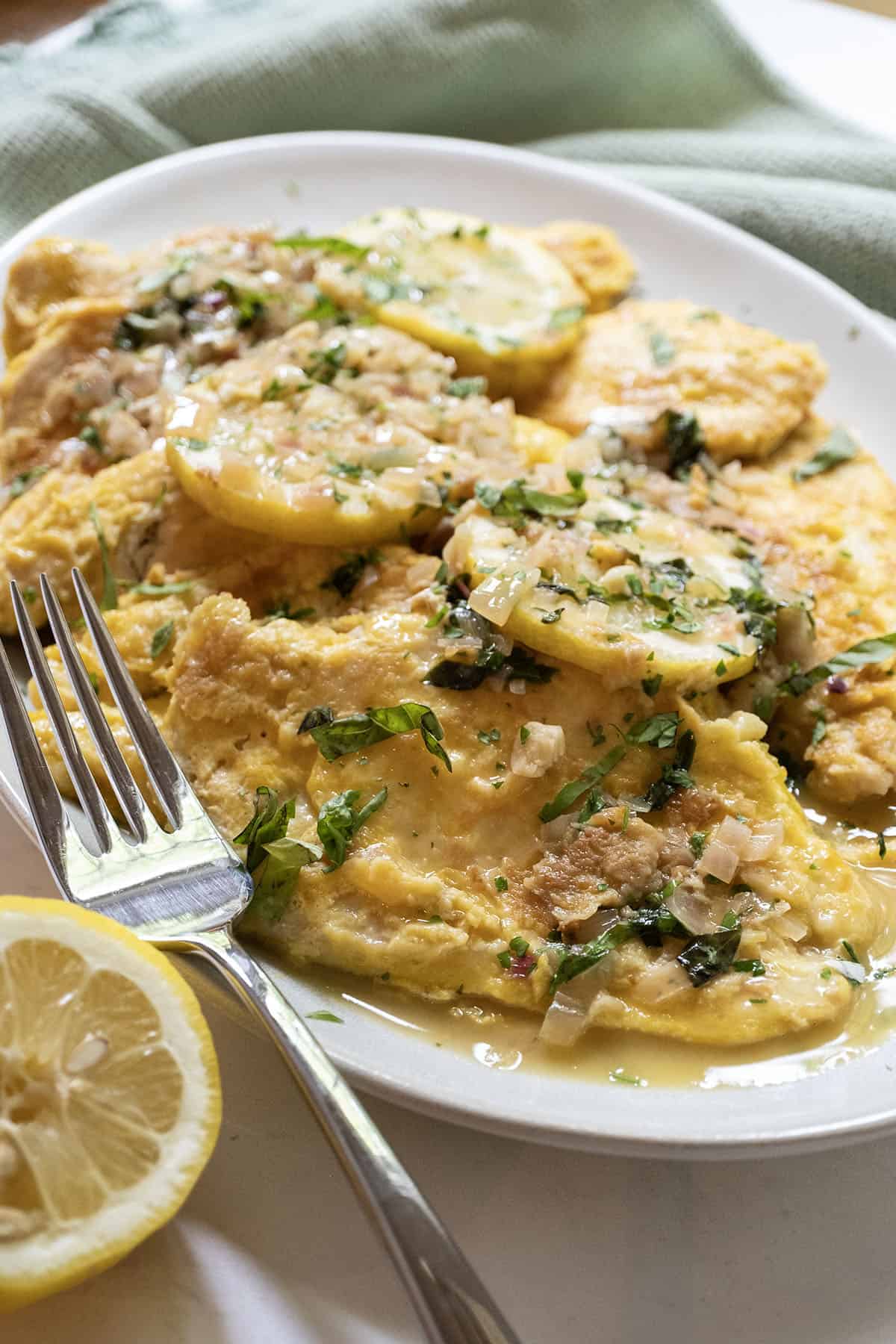
Craving more fantastic restaurant-style Italian meals you can create in your own kitchen? Explore our other beloved recipes, including: Chicken Saltimbocca, Chicken Scarpariello, or our comforting Eggplant Parmigiana.
Why This Chicken Francese Recipe Stands Out
For me, Chicken Francese holds a special place in my heart, thanks to my mom’s kitchen. Growing up, this delightful dish was a regular feature at our dinner table, though she never called it by its official name. To make it more appealing to us picky eaters, she simply referred to it as lemon chicken. The vibrant, zesty flavors of lemon combined with tender chicken always made it a family favorite, a tradition I’m thrilled to share with you.
One of the biggest advantages of this recipe is its incredible speed. From cutting board to dinner table, this Chicken Francese takes less than an hour to prepare. While it might not be a lightning-fast 15-minute meal like our Spaghetti with Garlic and Oil or Pasta with Cauliflower, the slightly longer wait for Chicken Francese is undeniably worth it. The depth of flavor and tender texture you achieve in this timeframe are truly remarkable. If you’re looking for a similar but distinct flavor profile, you might also enjoy its cousin, Chicken Piccata, which offers a delightful twist with briny capers and a different breading approach without the egg.
Chicken Francese often sparks lively debates about its origins. Many people assert it’s purely an American dish, a product of Italian immigrants adapting their culinary traditions to the ingredients and tastes of their new home. While a specific ancient written recipe from Italy for “Chicken Francese” might not exist, its essence is profoundly Italian-inspired. The techniques, the use of lemon, and the method of preparing chicken cutlets all point to a rich culinary heritage brought over by Italian immigrants. Regardless of whether it was first conceived in a bustling trattoria in Naples or a cozy kitchen in upstate New York, this dish has become a beloved classic, enjoyed by countless families, including my own.
Essential Ingredient Notes and Smart Substitutions
To truly achieve that restaurant-quality taste, selecting the right ingredients is key. Here’s a closer look at what you’ll need and how to make the best choices for your Chicken Francese.
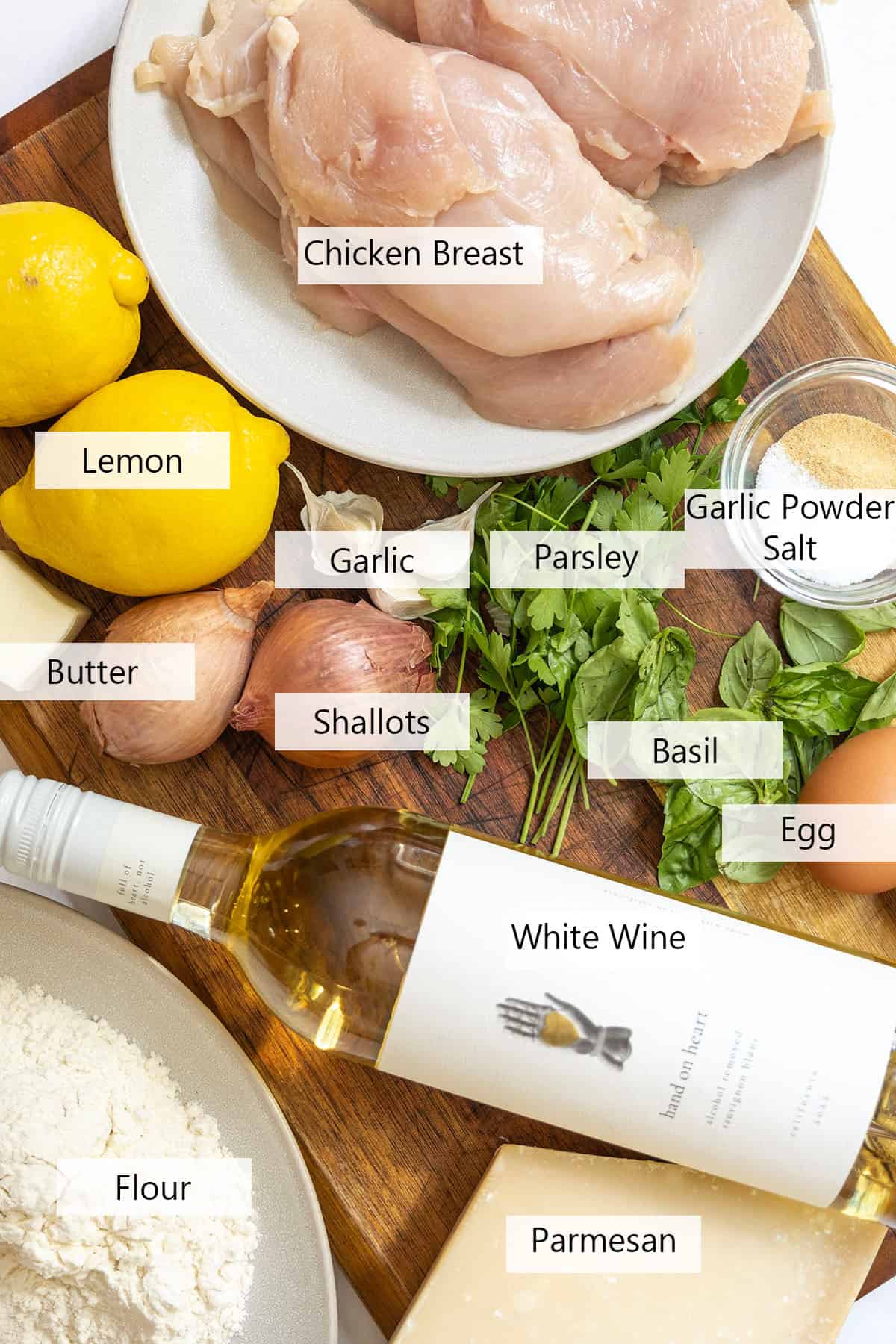
Parmigiano Cheese: The distinction between authentic Parmigiano-Reggiano and generic “parmesan” is more significant than many realize. True Parmigiano-Reggiano must be produced in specific regions of Italy and aged for at least two years, developing a complex, nutty, and savory flavor profile. American-made parmesan, while often good, is typically aged for a shorter period (around 10 months) and can lack the nuanced depth of its Italian counterpart. For the most authentic and robust flavor in your Francese, spring for genuine Parmigiano-Reggiano.
High-Quality Olive Oil: In a dish like Chicken Francese, where the olive oil forms the base for pan-frying and contributes significantly to the overall flavor, choosing a high-quality extra virgin olive oil is paramount. You will truly taste the oil, so opt for something delicious and well-balanced. I consistently recommend brands like Partanna for their superior flavor and purity. A good olive oil will enhance the richness of the chicken and the sauce without overpowering the delicate lemon notes.
White Wine: A dry white wine is essential for deglazing the pan and building the complex flavors of the Francese sauce. Sauvignon Blanc is my absolute go-to for cooking, offering a crisp acidity that beautifully complements the lemon. Recently, I’ve discovered a brand called Sea Salt, which is not only tasty and refreshing to drink but also economically priced for cooking. If Sauvignon Blanc isn’t available, a dry Pinot Grigio is an excellent alternative, offering similar bright and fruit-forward notes without being too sweet. Remember to choose a wine you’d enjoy drinking, as its flavor will concentrate in the sauce.
Optional Additions: While Chicken Francese is traditionally served without capers (which are more common in Chicken Piccata), I sometimes add them to this dish for an extra pop of briny, tangy flavor. A tablespoon or two stirred into the sauce at the end can add an interesting layer of complexity that some people truly enjoy. Feel free to experiment!
*For precise measurements and detailed instructions, please consult the comprehensive recipe card provided further down the page.
Step-by-Step Guide: Crafting Your Perfect Chicken Francese
This recipe is designed to yield approximately 8 generous servings, perfect for a family dinner or a small gathering. If you’re planning a larger celebration, head over to our FAQs section for tips on how to scale this recipe for a big party.

Step 1: Prepare the Breading. Begin by thinly slicing your chicken breasts if they aren’t already cutlets. On a large, shallow plate, combine the flour and garlic powder, mixing them thoroughly. This will be your first layer of coating. Take each chicken cutlet and dredge it completely in the flour mixture, gently patting to ensure an even coating. Set these aside while you prepare the egg wash.

Step 2: Create the Egg Batter. In a separate large bowl, whisk together the eggs, grated Parmigiano cheese, and a pinch of salt until well combined and slightly frothy. This egg and cheese mixture is the secret to the Francese’s signature tender, flavorful crust. Only dip the floured chicken cutlets into this egg batter right before you’re ready to place them in the hot pan. This immediate transfer ensures the crispiest, most delicious result.
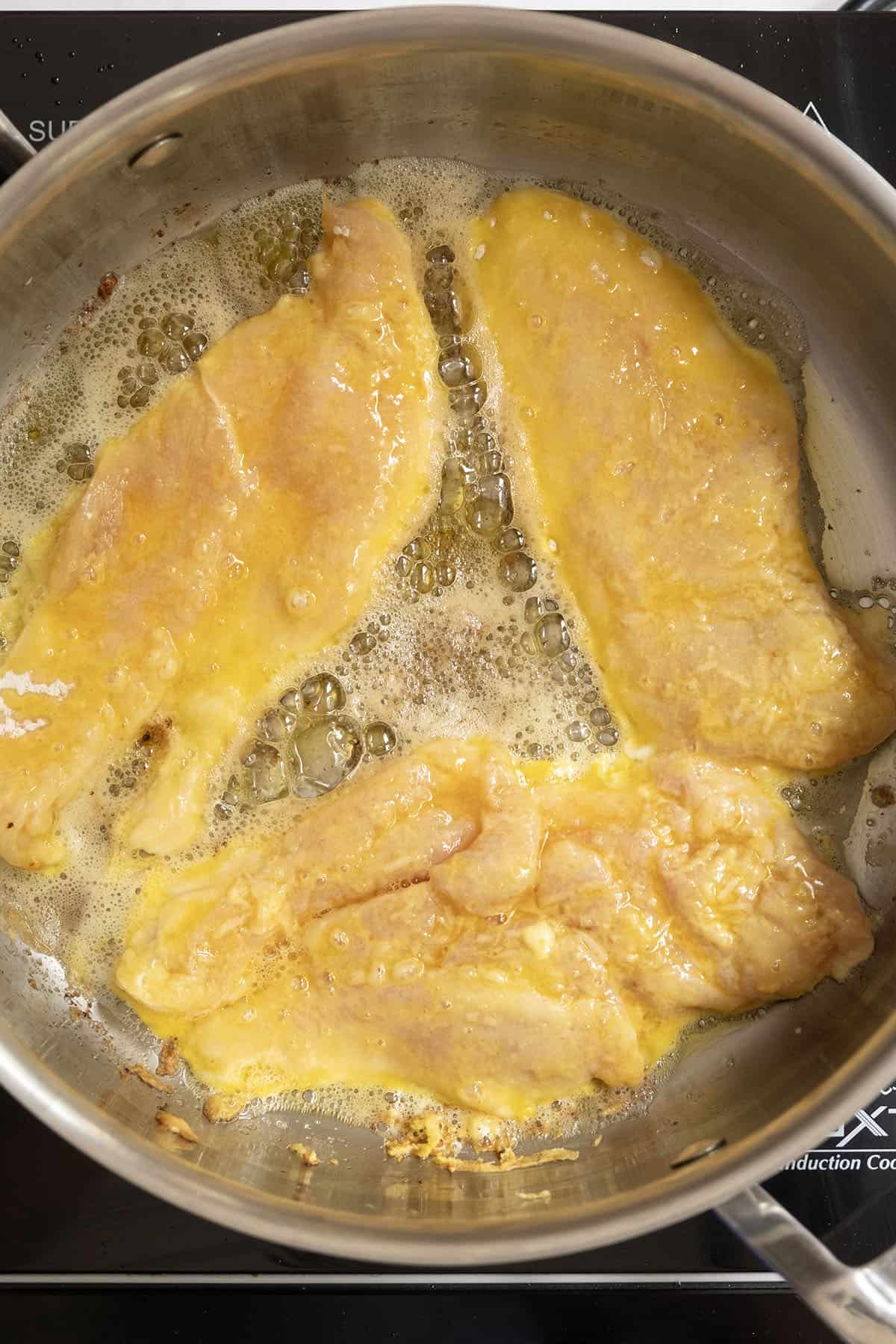
Step 3: Heat the Pan and Fry. In a large, sturdy saucepan or skillet, add enough high-quality olive oil to generously coat the bottom of the pan. Heat the oil over medium heat until it begins to shimmer. This is crucial for achieving a perfectly golden and crispy crust. Carefully place the battered chicken cutlets into the hot oil, making sure not to overcrowd the pan. Cooking in batches ensures even browning and prevents the chicken from steaming instead of frying.

Step 4: Achieve Golden Perfection. Fry the chicken cutlets for approximately 2-3 minutes per side, or until they reach a beautiful golden-brown color and are cooked through. The key is to achieve that perfect crispy exterior while keeping the inside juicy and tender. As you cook successive batches, add more olive oil to the pan as needed to maintain adequate coverage and ensure even cooking. Once fried, remove the chicken from the pan and set aside on a wire rack or plate lined with paper towels.
Always ensure there is sufficient olive oil in the pan; this helps the chicken cook evenly and prevents sticking. When you raise the heat to medium, the olive oil should be visibly shimmering before you introduce the cutlets. This indicates the oil is hot enough to create that desirable crispy crust without the batter absorbing too much oil.
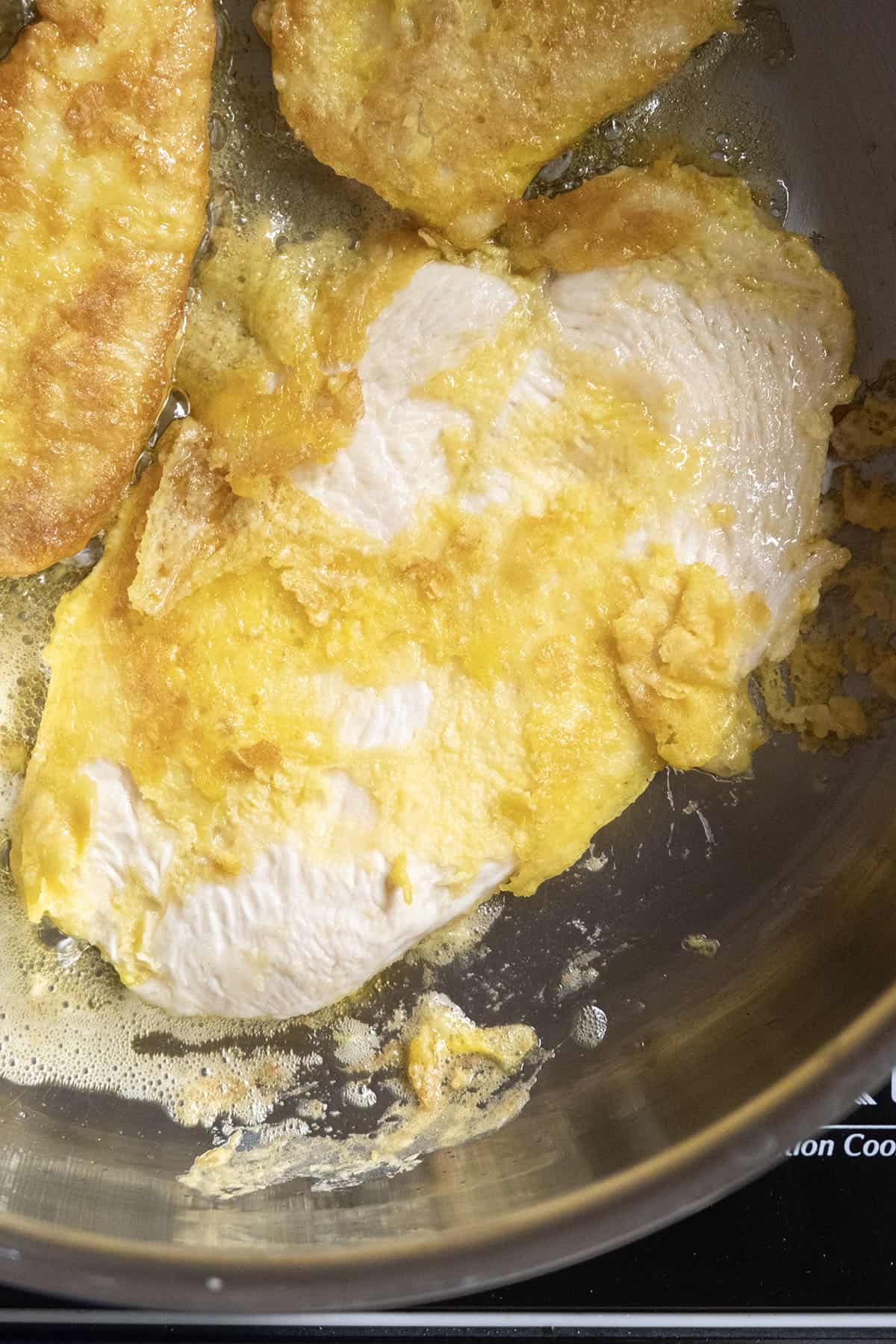
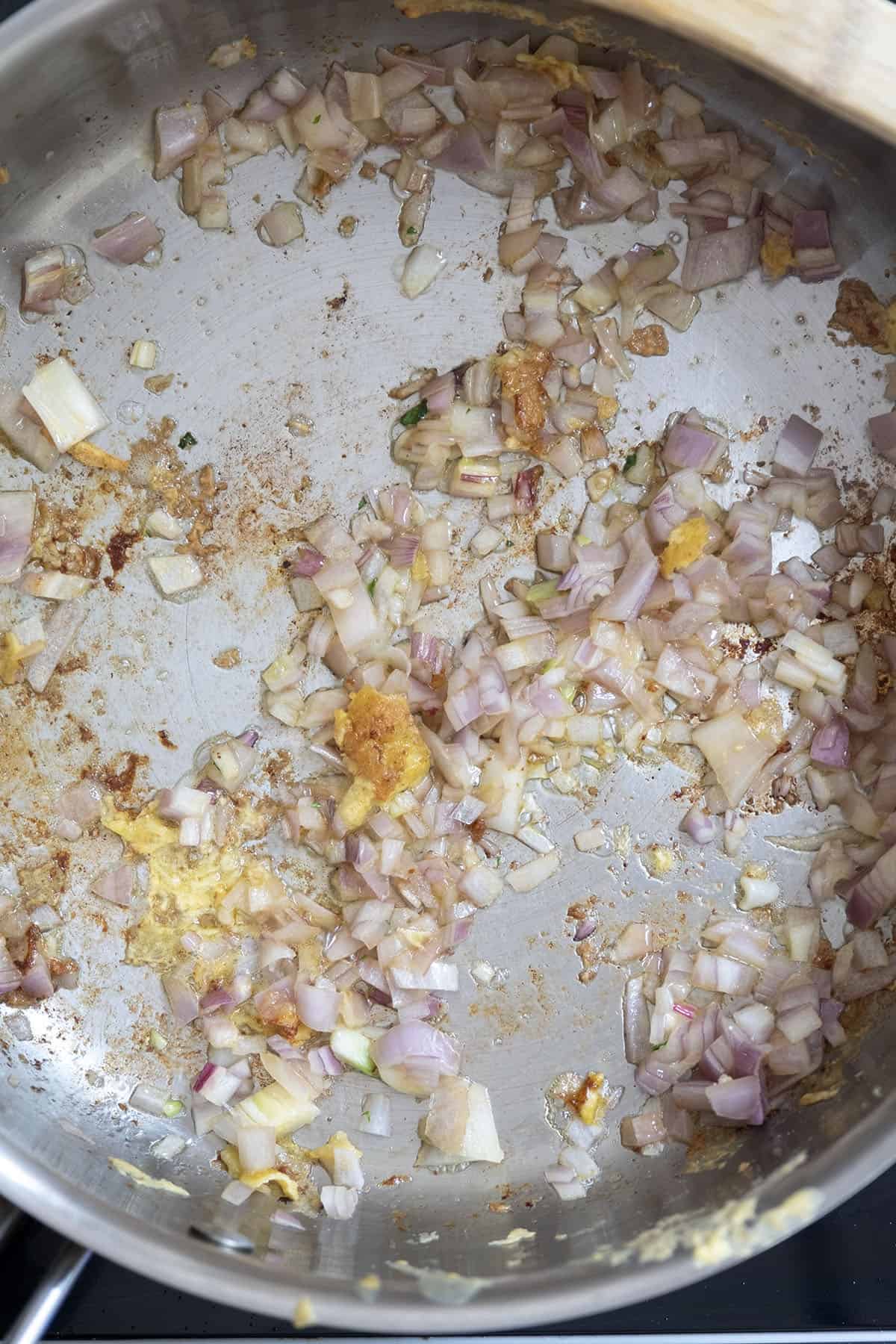
Step 5: Build the Aromatic Base. If there’s still a good amount of oil remaining in the pan after frying the chicken, proceed to add your finely chopped shallots. Sauté them gently for about 4 minutes, or until they become beautifully soft and translucent, releasing their sweet aroma. If the pan looks a bit dry, add an extra tablespoon of fresh olive oil. Once the shallots are tender, introduce the minced garlic and continue to sauté for another 1-2 minutes until fragrant. Be careful not to burn the garlic!
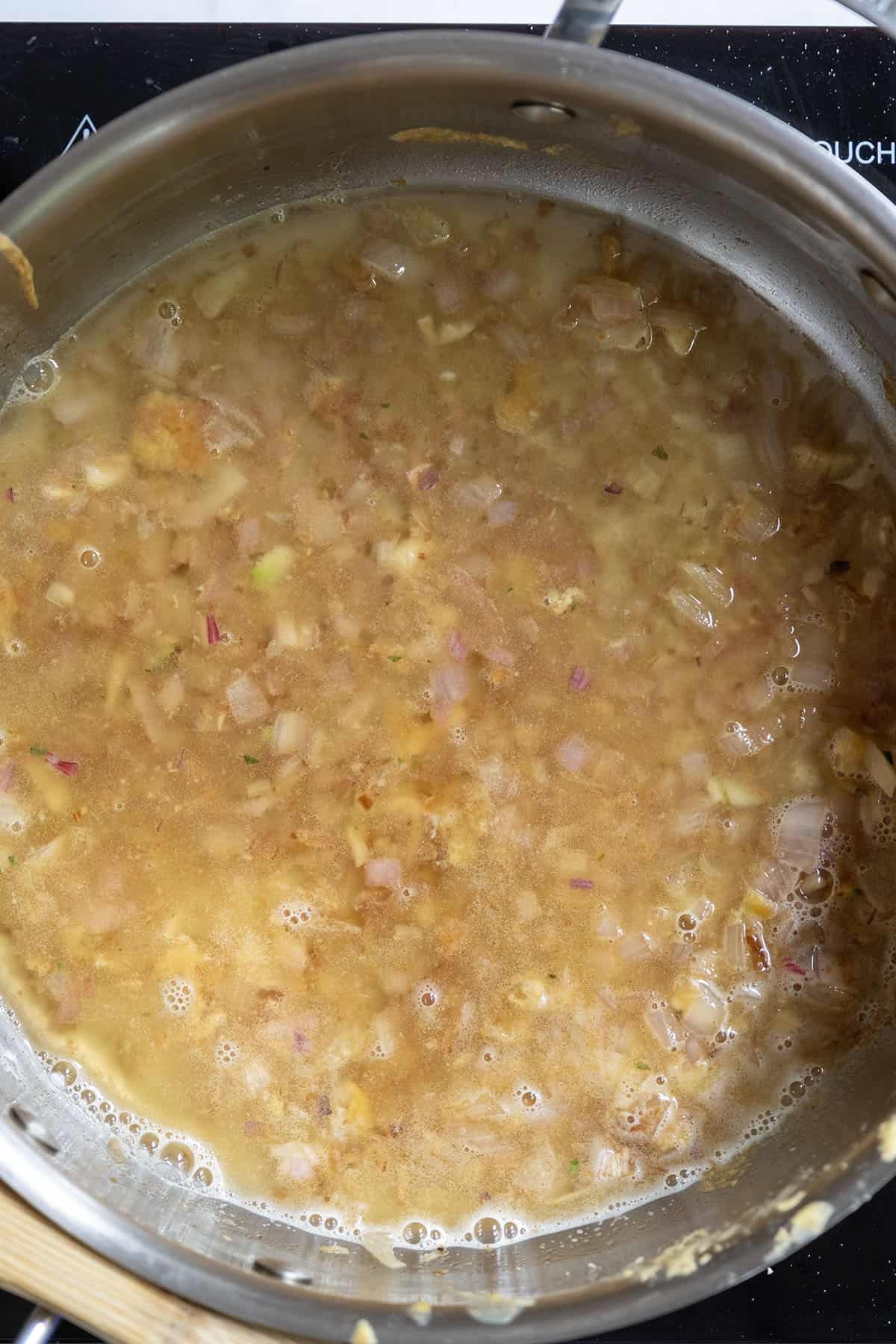
Step 6: Develop the Signature Sauce. Now it’s time to build that iconic Francese sauce. Squeeze in the fresh juice from one whole lemon directly into the pan, letting it simmer briefly to mellow out. Next, pour in the white wine, stirring to deglaze the pan and scrape up any flavorful browned bits (fond) from the bottom. Bring the mixture to a gentle simmer and reduce it by half. This step concentrates the flavors beautifully. Finally, add the chicken broth and bring the sauce back to a simmer, allowing it to slightly thicken.
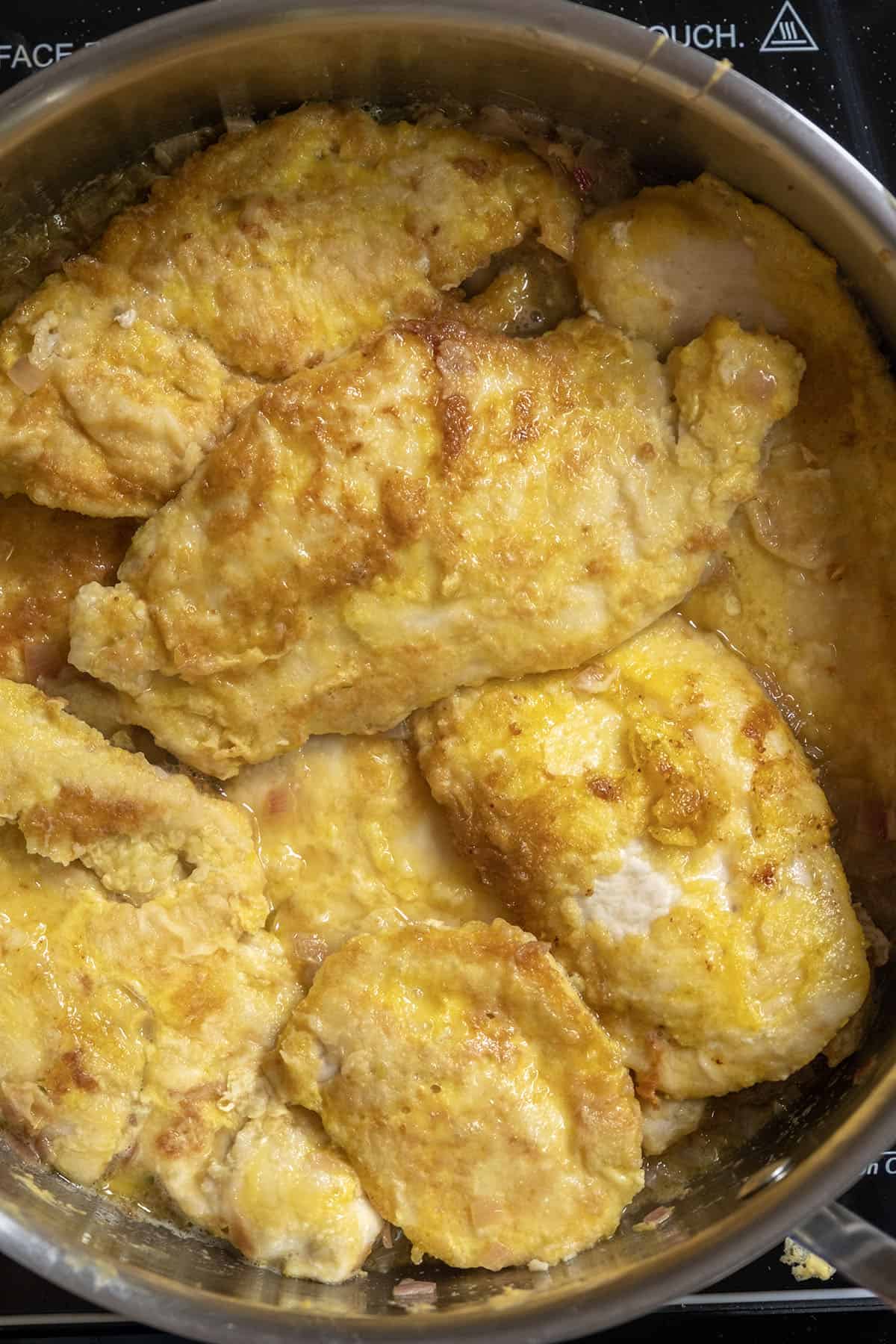
Step 7: Finish Cooking the Chicken. Gently return the previously fried chicken cutlets to the simmering sauce. Allow them to finish cooking through in the flavorful liquid until their internal temperature reaches a safe 165℉. This brief simmer also allows the chicken to absorb more of that wonderful lemony-wine sauce, making each bite incredibly juicy and tender. Once cooked, carefully remove the chicken cutlets from the pan and set them aside once more.
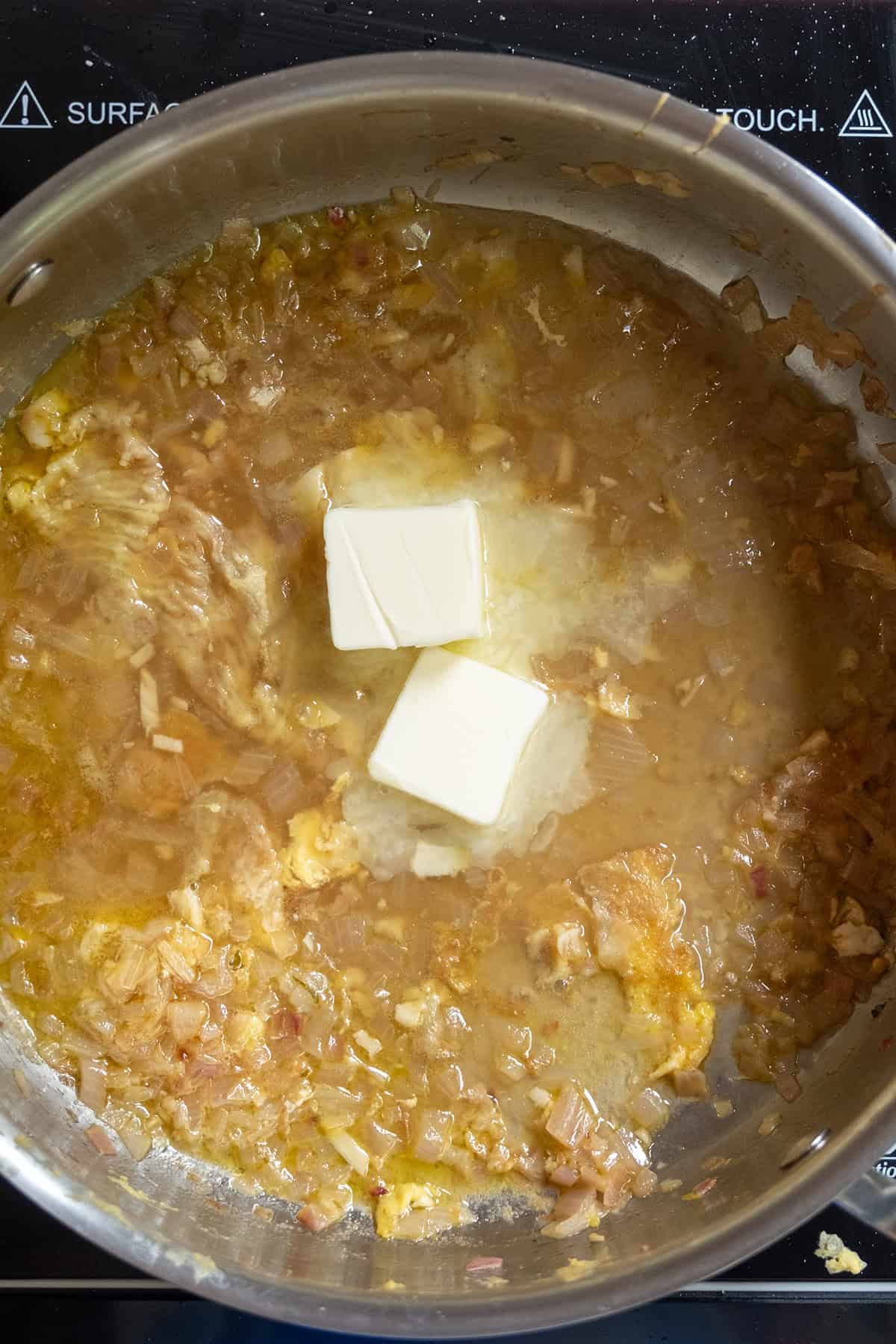
Step 8: Final Touches and Garnish. Remove the pan from the heat. This is a critical step for incorporating the butter without breaking the sauce. Stir in the cold butter, basil, and fresh parsley. The butter will melt and emulsify into the sauce, making it rich, glossy, and incredibly flavorful. Arrange the chicken cutlets on your serving platter, then generously pour the luscious lemon-butter sauce over them. Garnish with additional fresh lemon slices and a sprinkle of chopped parsley or basil for a beautiful presentation and an extra burst of freshness. Serve immediately and enjoy!
Pro-Tips for Perfect Chicken Francese Every Time
Achieving restaurant-quality Chicken Francese is easier than you think, especially with these insider tips:
- Don’t Dredge in Advance: This is perhaps the most crucial tip for crispy Francese. It is absolutely important not to dredge the chicken in the flour and egg batter too far in advance. If you do, the flour will quickly soak up the moisture from the chicken and the egg, resulting in a soggy, rather than crispy, crust that will barely adhere to the chicken during frying. For the crispiest, most perfectly coated results, dredge the chicken in the flour, then immediately dip it in the egg mixture, and transfer it directly to the hot pan for frying. Timing is everything here!
- Avoid Overcrowding the Pan: When frying your chicken cutlets, resist the urge to cram too many pieces into the pan at once, even if you’re in a hurry. Overcrowding significantly drops the temperature of the oil, which causes the chicken to steam rather than fry. This leads to a pale, rubbery exterior instead of a beautiful, golden-brown, crispy crust. Always work in batches, ensuring there’s enough space around each cutlet for proper heat circulation and even cooking. This simple step will make a world of difference in the texture of your chicken.
- Monitor Oil Temperature: As mentioned in the steps, always ensure your olive oil is shimmering but not smoking before adding the chicken. If it’s not hot enough, the batter will stick or become greasy. If it’s too hot, the batter will burn before the chicken cooks through. A medium heat, where the oil gently shimmers, is ideal.
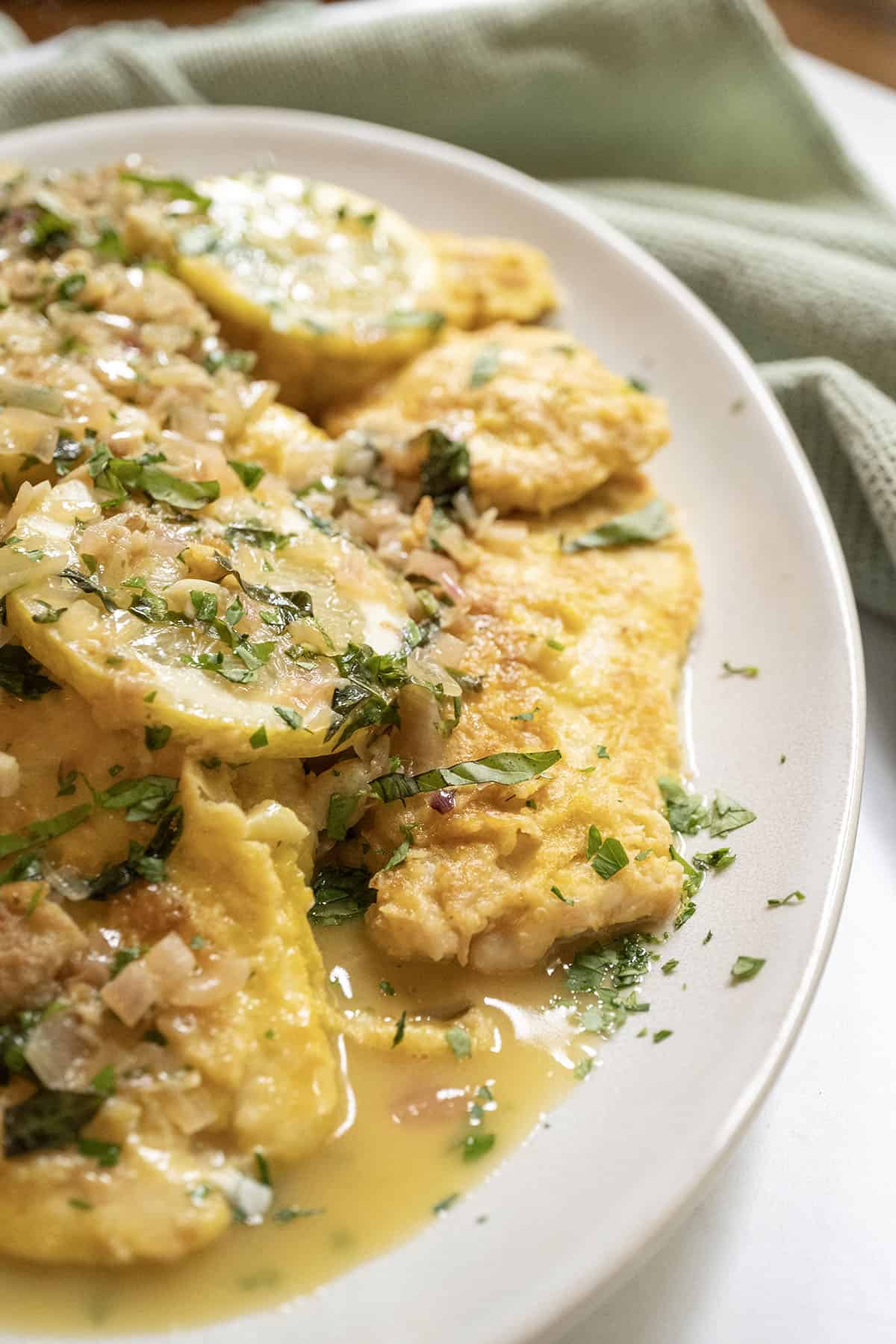
Perfect Pairings: What to Serve with Chicken Francese
Chicken Francese is incredibly versatile and pairs wonderfully with a variety of sides, whether you’re looking for a light accompaniment or a hearty, satisfying meal:
- Pasta Perfection: For a classic Italian-American experience, I love to serve Chicken Francese with a simple yet flavorful pasta. Our Spaghetti with Garlic and Oil is a fantastic choice, allowing the Francese sauce to shine. Alternatively, a bright Lemon Pasta with Spinach or a savory Artichoke Pesto Pasta would also complement the flavors beautifully.
- Green and Vibrant Vegetables: Fresh, crisp vegetables cut through the richness of the sauce. Consider serving it alongside blanched asparagus, roasted Maple Bacon Brussels Sprouts, tender Braised Kale, or garlicky Sautéed Broccoli Rabe. These options add color, texture, and nutritional value to your meal.
- Hearty Grains & Risottos: If you prefer a more substantial base, Chicken Francese is excellent over jasmine rice, which absorbs the sauce wonderfully. For a touch of elegance, try it with a creamy Mushroom Truffle Risotto or a light and flavorful Lemon Orzo.
- The Perfect Sip: Don’t forget to pour yourself a glass of the same crisp Sauvignon Blanc you used for cooking! Its bright acidity and complementary flavors will beautifully enhance every bite of your Chicken Francese.
- A Sweet Ending: After such a delightful meal, be sure to leave room for dessert. Indulge in a slice of our festive Rainbow Cookie Cake or a decadent Pistachio Cream Tiramisu to complete your Italian-inspired feast.
Recipe FAQs: Your Chicken Francese Questions Answered
Chicken Francese is a fascinating example of Italian-American culinary innovation. While it’s firmly rooted in Italian traditions and cooking techniques, it originated in America, specifically thought to have developed in Italian immigrant communities in upstate New York. So, it’s “Italian” in its soul and lineage, created by Italians, but it’s not a dish you’d typically find on a menu in Italy itself. Its history reflects the rich cultural exchange that happened as immigrants adapted their recipes to new ingredients and palates.
Like many beloved regional dishes, Chicken Francese goes by a colorful array of nicknames, each reflecting its local popularity. I’ve heard it affectionately referred to as “wedding chicken,” “Rochester chicken” (a nod to its New York origins), and simply “chicken french.” Sometimes, you might even see it spelled “chicken française,” though the “francese” spelling is most common in Italian-American cuisine. Regardless of its name, it remains a cherished recipe that brings joy to everyone who tries it.
Cooking Chicken Francese for a crowd is perfectly doable with a few adjustments:
1. Preheat your oven to a moderate 350°F (175°C). Start by preparing and lightly frying all your chicken cutlets in batches, as outlined in the recipe, until golden brown. You may need a larger pan or multiple pans. While the chicken fries, prepare your sauce by doubling or even tripling the sauce portion of the recipe, bringing it to a nice simmer to thicken slightly.
2. Arrange all the lightly fried chicken cutlets in a single layer in a disposable aluminum half-tray or full-tray. Pour all the prepared sauce evenly over the chicken. Cover the tray tightly with foil and bake in the preheated oven for approximately 15-20 minutes, or until the chicken is thoroughly heated through and reaches an internal temperature of 165℉. This method ensures the chicken stays moist and flavorful, absorbing the sauce beautifully.
To store, allow the Chicken Francese to cool completely, then transfer it along with its sauce to an airtight container. It will keep well in the refrigerator for up to 3-4 days. The best way to reheat Chicken Francese is to gently warm it in a saucepan on the stovetop. Add some leftover sauce (if available) and a splash of chicken broth to a medium saucepan over low to medium heat. Once the sauce begins to simmer, add the chicken and warm it through, turning occasionally, until it’s heated evenly. This method helps prevent the chicken from drying out and keeps the sauce smooth. While microwaving is an option for convenience, be aware that the chicken might become slightly rubbery or tough.
Explore More Classic Italian-American Recipes
If you’ve fallen in love with the vibrant flavors of Chicken Francese, you’ll surely enjoy these other classic Italian-American dishes from our kitchen:
- Easy Chicken Cacciatore
- Restaurant-Style Chicken Marsala
- Linguine with Red Clam Sauce
- The BEST Chicken Pizzaiola
Please take a moment to leave a comment and a star rating below in the recipe card! I genuinely love to hear what you think of our recipes and how they turn out in your kitchen. Feel free to tag us on Instagram @vindelgiudice to share your culinary creations!
📖 Recipe

Restaurant-Style Chicken Francese
Vincent DelGiudice
Pin Recipe
Equipment
-
1 large saucepan
-
1 medium bowl
Ingredients
- 3 chicken breasts, sliced thin (about 1.5 lbs total)
- 2 lemons (one for juice, one for garnish)
- 3 cloves garlic, minced
- 1 shallot, finely chopped
- 2 tablespoons fresh parsley, chopped
- ½ cup dry white wine (like Sauvignon Blanc or Pinot Grigio)
- 1 cup chicken broth
- ¼ cup high-quality olive oil, plus more for frying
- 1 cup all-purpose flour
- 2 tablespoons garlic powder
- 2 large eggs
- ½ cup grated Parmigiano cheese
- 2 teaspoons salt, divided
- handful of fresh basil, roughly chopped
- 3 tablespoons cold unsalted butter, cut into pieces
Instructions
-
On a large, shallow plate, combine the flour and garlic powder. In a separate large bowl, whisk together the eggs, grated Parmigiano cheese, and 1 teaspoon of salt. Prepare your chicken cutlets by dredging them first in the flour mixture, patting off any excess, then immediately dipping them into the egg and cheese mixture. Ensure the chicken is coated evenly.
-
Heat about ¼ cup of olive oil in a large saucepan or skillet over medium heat until it shimmers. Carefully place the battered chicken cutlets into the hot oil in batches, ensuring not to overcrowd the pan. Fry the chicken for approximately 2-3 minutes per side, or until they are golden brown and cooked through. Remove the cooked chicken to a plate or wire rack and add more olive oil to the pan as needed for subsequent batches.
-
With any remaining oil in the pan (or adding a tablespoon more if necessary), add the chopped shallots and sauté for 4 minutes until softened. Then, add the minced garlic and cook for another 1-2 minutes until fragrant. Squeeze the juice from 1 lemon into the pan and let it simmer for a moment. Pour in the white wine, bring it to a simmer, and reduce the liquid by half, or until it coats the back of a spoon.
-
Once the wine has reduced, add the chicken broth and bring the sauce back to a gentle simmer. Return the cooked chicken cutlets to the pan, allowing them to finish cooking and warm through in the sauce until they reach an internal temperature of 165℉. Remove the chicken from the pan. Take the pan off the heat and stir in the 3 tablespoons of cold butter, fresh basil, and chopped parsley until the butter has melted and the sauce is glossy. Pour the delicious sauce generously over the chicken and garnish with fresh lemon slices before serving.
Notes
- It is important not to dredge the chicken in advance. The flour will soak right into the chicken and it will look like it is no longer even battered. You will get the crispiest results from frying if you dredge and then fry immediately.
- The best way to fry the cutlets is to not overcrowd the pan. Work in batches to ensure the chicken fries evenly and becomes crispy, rather than steaming.
Nutrition
